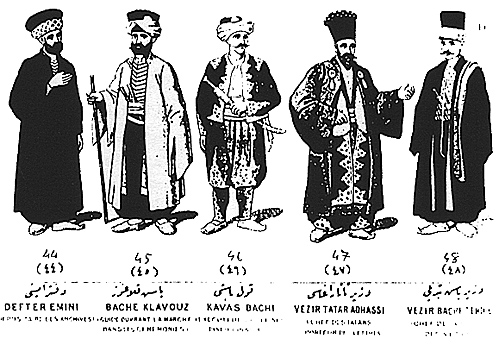When led by a dynamic pasha, or general, they would follow him and serve him well. They were not paid and had to rely on the booty taken from defeated opponents. This host insisted on returning to their land to collect their revenue during the winter months. As a result, the Ottoman armies often lost any territory that might have been gained during the campaign part of the year.
Artillery was the weakest link in the Ottoman army. A roll call in 1776 indicated 3,258 men in the cannon corps and 1,482 inthe auxilliary cannon-wagon corps. Out of this total, only 500 were present in the following campaign against the Russians. This 500 man contingent represents what left Istanbul with the army, the remaining numbers stayed behind. The Ottomans primarily used the Balyemez and Shahi cannons. These were extremely outdated and gradually they converted to the new rapid-fire (Surat) cannons. There were about ten men in each gun crew. There was no standardization in the types of guns within an artillery regiment until the 1780's. The transportation units for the artillery, comprised largely of Bosnians, were independent of the artillery regiment and this led to obvious problems.
The Mortar and Mine-laying Corps was comprised largely of Bosnians and Albanians by the early 1700's. There were six regiments of 100 men. Half of these were salaried with the balance supported by fiefs. I could not find any record indicating the number of mortar crew per regiment, but I would have to guess that it would be close to the artillery ratio of ten men per gun. In this unit only the Humbaraji Bashi was the Supreme Officer. Men in this unit were not allowed to marry.
Other units included Akincis, who were veteran fighters. They were volunteers raised in the European area of the empire. They acted as scouts and were paid strictly with captured loot. There were also troops known as Yaya and Piyade, irregular infantry, and the Musellems, which were Turkish cavalry who lived within the European areas of the empire. People living in Serbia and Macedonia who fought for the empire were called Vlachs.
Here is how one British officer described the Ottoman Army in the late 1790's:
- "What is expected from such troops, or rather mob thus commanded? Nothing but shame and disgrace, and yet they have fine men, excellent horses, plenty of ammunition and provisions, and in short, great abundance of all the materials required to constitute a formidable army, but they want order and system, which would be difficult to establish if their principal officers were not so astonishingly adverse to anything tending towards it.
The camp is composed of many different nations and natures of troops, which though properly speaking are subject to the same sovereign and pretending to the same religion are however extremely distinct as to their views and separate interests, jealous of each other with very little public spirit, and only serving for plunder or personal advantage, and have very little zeal when they have no immediate prospect of satisfying their own particular views.
The authority of the Vizier is equally incomprehensible; an apparent great submission and immediate power of life and death over individuals, but he himself seems to stand in great apprehension of offending them, seems not to dare to order such detachment to encamp in this or that place, nor to give them the least interruption or inconvenience, is obliged to use the most gentleness and leniency towards them to prevail upon them to do anything of the most trifling nature and to prevent their entirely abandoning him."
Until the New Army in the early 1800's there was no change in the military uniforms. The soldiers for the most part wore the same clothes as the civilians. Only the color would be different. There were some special units like the Janissaries who had their own uniform.
Troops were given medals (madalya) for loyalty to the government. The first medal was Ferah Madalyasi, this was made of gold and was a military award. It was first issued in 1730. The second medal was Ikinci Madalya and was issued in honor of a new form of money that the empire issued. The third medal was Sikke-i Cedide Madalyasi Idi, and it was given to citizens, foreign officials and the military for service to the state.
Listed below are some Ottoman military terms:
- Orta = regiment (regiments were divided into squads or boluks)
Agha = Corps Commander
Chorbaji = Colonel
Boluk Bashi = Captain
Odabashi = Colonel Assistant, steward, second in line to Colonel
Chavush = Sergeant
Humbaraji Bashi = Military Supervisor
Dizdar = Commander, he held joint command with the Humbaraji Bashi
Yamaks = Auxiliary Levies
Gazi = Border Warrior
Maasli = Salaried Ottoman Soldier
Ottoman Military Units: Military Reform and Organization

Back to Seven Years War Asso. Journal Vol. VII No. 2 Table of Contents
Back to Seven Years War Asso. Journal List of Issues
Back to Master Magazine List
© Copyright 1994 by James E. Purky
This article appears in MagWeb (Magazine Web) on the Internet World Wide Web.
Other military history articles and gaming articles are available at http://www.magweb.com